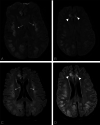Hyperammonemia in lung transplant patients and its management: a review
- PMID: 35756952
- PMCID: PMC9226249
- DOI: 10.1007/s12055-021-01319-6
Hyperammonemia in lung transplant patients and its management: a review
Abstract
Objective: To synthesize the evidence for incidence, pathophysiology, etiology, and protocol-based management of hyperammonemia in lung transplant patients.
Background: Elevated ammonia levels are toxic to the brain, and hyperammonemia results in a potentially fatal complication for lung transplant recipients. The hallmark of this condition is ammonia production being way out of proportion to the degree of liver derangement. While there are many hypotheses, the cause remains obscure.
Methods: A retrospective review of patients with hyperammonemia following lung transplantation was done to understand the pathophysiology, various treatment modalities, and its impact on patient mortality and morbidity. Studies in the English literature were identified through an electronic database search from PubMed/MEDLINE, Ovid Embase, Google Scholar, Cochrane Database of Systematic Reviews (CDSR), Cochrane Central Register of Controlled Trials (CENTRAL), Scopus, Web of Science, and ClinicalTrials.gov until June 2020. No restriction of dates were used, and the search was up until June 2020.
Discussion: Mortality among patients with hyperammonemia following lung transplantation is high. Multi-modal treatment approaches include avoiding nephrotoxic drugs, use of bowel decontamination, nitrogen scavengers, branched-chain amino acids, adjustment of immunosuppression, antibiotics like fluoroquinolones or azithromycin, and renal replacement therapy. However, there remains a scarcity of preoperative screening protocol for patients at risk of hyperammonemia as well evidence-based post-operative management guidelines. Intermittent hemodialysis, compared to continuous venovenous hemodialysis, provides better patient outcomes.
Conclusion: Early detection of patients at risk by appropriate screening, along with maintaining a high degree of suspicion for hyperammonemia and multi-modal treatment approach, is the key to successful patient outcomes. Further prospective observational studies would facilitate development of protocol-based treatment of this potentially fatal condition.
Keywords: Hyperammonemia; Lung transplantation; Renal replacement therapy.
© Indian Association of Cardiovascular-Thoracic Surgeons 2022.
Conflict of interest statement
Conflict of interestThe authors have nothing to disclose with respect to the present submission.
Figures



Similar articles
-
Treatment of Hyperammonemia Syndrome in Lung Transplant Recipients.J Clin Med. 2023 Nov 8;12(22):6975. doi: 10.3390/jcm12226975. J Clin Med. 2023. PMID: 38002590 Free PMC article. Review.
-
Pathophysiology and Management of Hyperammonemia in Organ Transplant Patients.Am J Kidney Dis. 2019 Sep;74(3):390-398. doi: 10.1053/j.ajkd.2019.03.419. Epub 2019 Apr 27. Am J Kidney Dis. 2019. PMID: 31040091 Review.
-
Hyperammonemia Syndrome After Lung Transplantation: A Single Center Experience.Transplantation. 2016 Mar;100(3):678-84. doi: 10.1097/TP.0000000000000868. Transplantation. 2016. PMID: 26335916
-
Continuous renal replacement therapy and transplant-free survival in acute liver failure: protocol for a systematic review and meta-analysis.Syst Rev. 2020 Jun 16;9(1):143. doi: 10.1186/s13643-020-01405-7. Syst Rev. 2020. PMID: 32546277 Free PMC article.
-
Beyond the black stump: rapid reviews of health research issues affecting regional, rural and remote Australia.Med J Aust. 2020 Dec;213 Suppl 11:S3-S32.e1. doi: 10.5694/mja2.50881. Med J Aust. 2020. PMID: 33314144
Cited by
-
Treatment of Hyperammonemia Syndrome in Lung Transplant Recipients.J Clin Med. 2023 Nov 8;12(22):6975. doi: 10.3390/jcm12226975. J Clin Med. 2023. PMID: 38002590 Free PMC article. Review.
-
Prevention and Management of Infections in Lung Transplant Recipients.J Clin Med. 2023 Dec 19;13(1):11. doi: 10.3390/jcm13010011. J Clin Med. 2023. PMID: 38202018 Free PMC article. Review.
-
Fatal multiple organ dysfunction caused by commensal bacteria of urogenital tract infection in adult lung transplant recipients: two case reports.Virol J. 2023 Feb 8;20(1):24. doi: 10.1186/s12985-022-01958-0. Virol J. 2023. PMID: 36755309 Free PMC article.
References
-
- Chambers DC, Cherikh WS, Harhay MO, et al. The International Thoracic Organ Transplant Registry of the International Society for Heart and Lung Transplantation: thirty-sixth adult lung and heart–lung transplantation Report—2019; Focus theme: Donor and recipient size match. J Heart Lung Transplant. 2019;38:1042–1055. doi: 10.1016/j.healun.2019.08.001. - DOI - PMC - PubMed
-
- NCBI. National Center for Biotechnology Information. PubChem Database. Ammonia, CID=222. https://pubchem.ncbi.nlm.nih.gov/compound/Ammonia
Publication types
LinkOut - more resources
Full Text Sources
